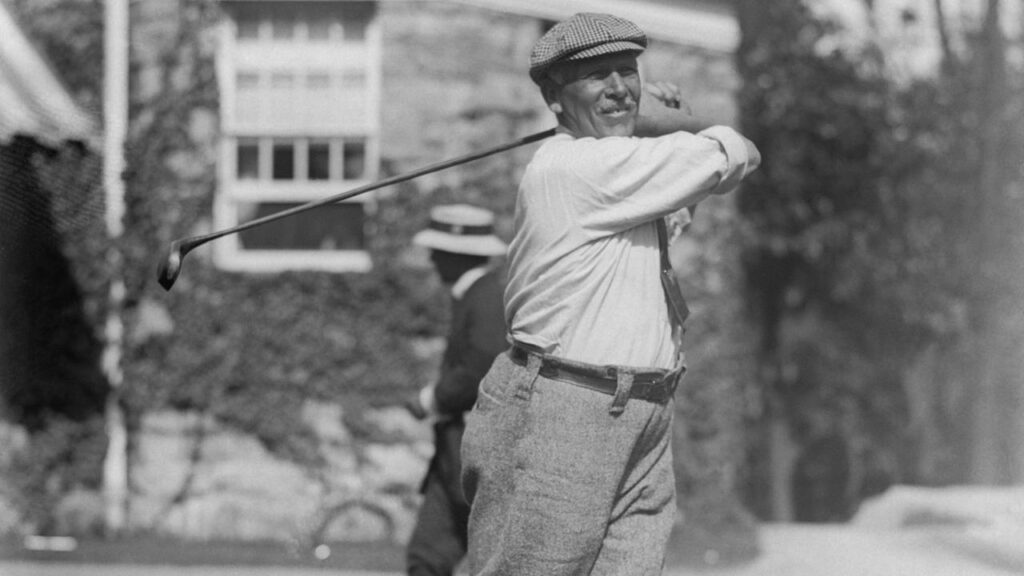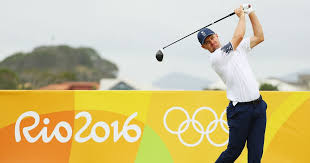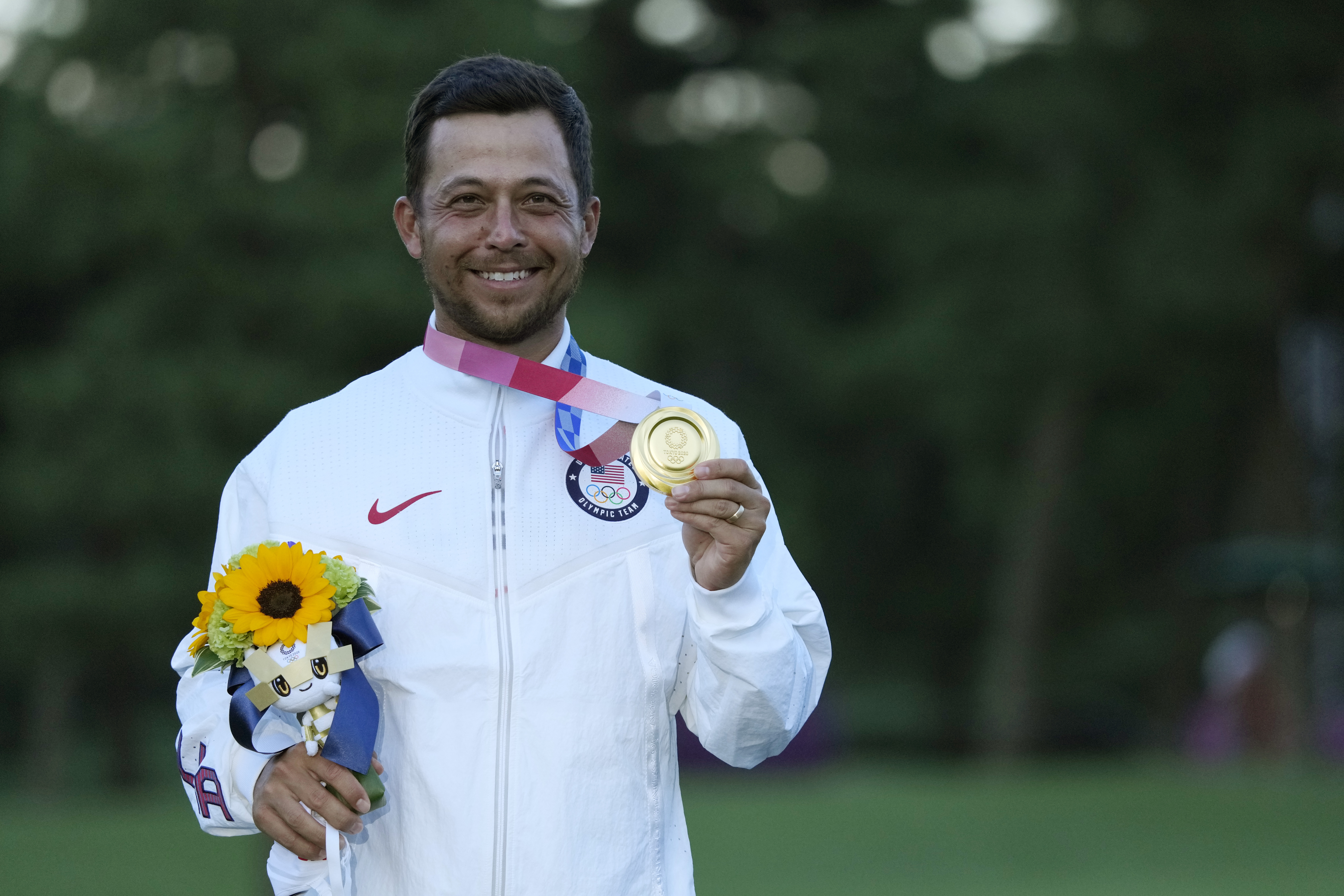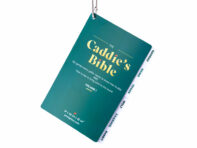The Fascinating History of Golf in the Olympics

Golf’s journey in the Olympics is a fascinating tale of early inclusion, a long hiatus, and a triumphant return. Pin High Inc. delves into the history of golf in the Olympics, from its beginnings to its modern revival, highlighting key moments, iconic venues, and significant players.
Early Beginnings (1900 and 1904)
Golf first appeared in the Olympics at the 1900 Paris Games. The event was held at the Compiègne Golf Club, located about 50 miles north of Paris. American Charles Sands won the men’s competition with scores of 82 and 85, while Margaret Abbott, also from the USA, became the first American woman to win an Olympic gold medal by shooting a 47 in the women’s event. Notably, Abbott and her mother, Mary Abbott, who also competed, were unaware they were participating in the Olympics due to the disorganized nature of the event.
The 1904 St. Louis Games saw a more structured competition with a men’s individual and a men’s team event. Canada’s George Lyon, who had only taken up golf eight years prior, won the gold medal in the men’s individual competition. The tournament also featured a team event, with teams from various U.S. regional golf associations competing. The Western Golf Association team, led by H. Chandler Egan, won the gold medal.
The Hiatus (1908-2012)
In 1908, a planned golf tournament at the London Olympics was canceled due to a dispute over player eligibility between the Olympic organizing committee and the Royal and Ancient Golf Club of St. Andrews. This led to a boycott by British golfers, leaving George Lyon as the only entrant. He was offered the gold medal by default but declined it.
Golf was scheduled to return at the 1920 Antwerp Games, but the event was canceled due to a lack of entries. The sport was subsequently dropped from the Olympic program and did not return until the 2016 Rio de Janeiro Games.

Modern Revival (2016-Present)
Golf made its much-anticipated return to the Olympics at the 2016 Rio Games after a 112-year absence. The event was held at the newly constructed Olympic Golf Course in Barra da Tijuca, designed specifically for the Games by Gil Hanse. The course, with its unique links-style layout, was praised for its challenging design and beautiful scenery, adding a new dimension to the Olympic golf competition.
Despite concerns over the Zika virus, which led to the withdrawal of top golfers like Jason Day, Dustin Johnson, Jordan Spieth, and Rory McIlroy, the competition featured a strong field of 60 players, including several major champions. The men’s tournament provided plenty of excitement, culminating in a thrilling final round. Great Britain’s Justin Rose clinched the gold medal with a score of 16-under par, narrowly defeating Sweden’s Henrik Stenson by two strokes. Rose’s performance included a historic hole-in-one during the opening round, which set the tone for his victory. American Matt Kuchar secured the bronze medal with a spectacular final-round 63, tied for the best round of the tournament.
In the women’s event, South Korea’s Inbee Park delivered a masterclass in golf, dominating the field with a score of 16-under par to win the gold medal by five shots. This victory solidified her status as one of the greatest female golfers of her generation. New Zealand’s Lydia Ko, the then-world number one, took silver, finishing just one shot ahead of China’s Shanshan Feng, who claimed the bronze. Stacy Lewis was the top American, tying for fourth place with a commendable performance .3

The 2020 Tokyo Games, postponed to 2021 due to the COVID-19 pandemic, took place at the Kasumigaseki Country Club. The men’s competition was again fiercely contested, with American Xander Schauffele emerging victorious with a score of 18-under par. Schauffele’s consistent play, highlighted by shooting in the 60s in all four rounds, earned him the gold medal. Rory Sabbatini of Slovakia delivered a stunning final-round 61 to leapfrog into the silver medal position, while a seven-man playoff decided the bronze medal, with Chinese Taipei’s Pan Cheng-tsung ultimately prevailing.
In the women’s tournament, Nelly Korda of the USA mirrored her compatriot Schauffele’s success, shooting a remarkable 62 in the second round and maintaining her lead to win the gold medal with a score of 17-under par. Japan’s Mone Inami and New Zealand’s Lydia Ko both finished one shot back, with Inami securing silver after a playoff. Lydia Ko’s bronze medal was historic as she became the first golfer to win medals in consecutive Olympic Games, following her silver in Rio.
The reintroduction of golf to the Olympics has had a significant impact on the sport, increasing its global visibility and inspiring new generations of golfers. The Olympic platform has provided golfers with a unique opportunity to represent their countries and compete on one of the world’s biggest stages. For Pin High Inc., supporting golf’s growth and the achievements of its athletes aligns with our mission to enhance the game for golfers everywhere.
Overall, the modern era of Olympic golf has been marked by memorable performances and dramatic moments, showcasing the sport’s ability to captivate audiences worldwide and solidify its place in the Olympic program for years to come.
Iconic Venues
Over the years, Olympic golf has been played at several iconic venues:
- 1900 Paris: Compiègne Golf Club
- 1904 St. Louis: Glen Echo Country Club
- 2016 Rio de Janeiro: Olympic Golf Course
- 2020 Tokyo: Kasumigaseki Country Club
These courses have not only provided a stage for historic moments but have also helped to elevate the sport’s profile globally.
Notable Moments and Players
- George Lyon’s Upset (1904): Lyon’s victory over the heavily favored H. Chandler Egan in difficult weather conditions remains one of the most memorable upsets in Olympic golf history.
- Justin Rose’s Hole-in-One (2016): Rose made history with a hole-in-one during the opening round of the Rio Games, setting the tone for his gold medal performance.
- Nelly Korda’s Consistency (2020): Korda’s performance in Tokyo, shooting in the 60s all four rounds, showcased her dominance and secured her place among the greats in Olympic golf.
Why Golf Was Removed
Golf was removed from the Olympics primarily due to a lack of interest and entries. The 1908 London Games saw a boycott by British golfers, and the 1920 Antwerp Games faced similar issues. Additionally, the lack of an international governing body and the sport’s limited global reach at the time contributed to its exclusion.
Medal Tally and Leading Nations
As of the latest games, the United States leads the medal tally with a total of 13 medals (5 gold, 3 silver, 5 bronze). Great Britain and Canada follow with 3 and 1 medals respectively. Among individual golfers, no one has dominated across multiple Olympics due to the sport’s long hiatus from the Games.
The Impact of the Olympics on Golf
The inclusion of golf in the Olympics has significantly boosted the sport’s visibility and popularity. It has inspired new generations of golfers and brought the game to a broader audience. The Olympic platform has also provided golfers with a unique opportunity to represent their countries and compete on a global stage, further enriching the sport’s legacy.
Pin High Inc. recognizes the importance of such milestones in golf history and continues to support the sport through its innovative products, ensuring that golfers worldwide can enjoy and excel in their game.
The history of golf in the Olympics is rich with fascinating stories and significant milestones. From its early days in Paris and St. Louis to its modern revival in Rio and Tokyo, golf has made an indelible mark on the Olympic movement. We look forward to the Summer games starting up in a few days!
For More Golf Content Subscribe to Pin High Inc's Newsletter
Featured Products
-

Golf Labels
Rated 5.00 out of 5$14.95 – $25.95Price range: $14.95 through $25.95 DESIGN A LABEL This product has multiple variants. The options may be chosen on the product page -

Caddie’s Bible
$19.95 – $34.95Price range: $19.95 through $34.95 Select options This product has multiple variants. The options may be chosen on the product page -

The Round File Scorecard
$14.95 – $25.95Price range: $14.95 through $25.95 Select options This product has multiple variants. The options may be chosen on the product page
